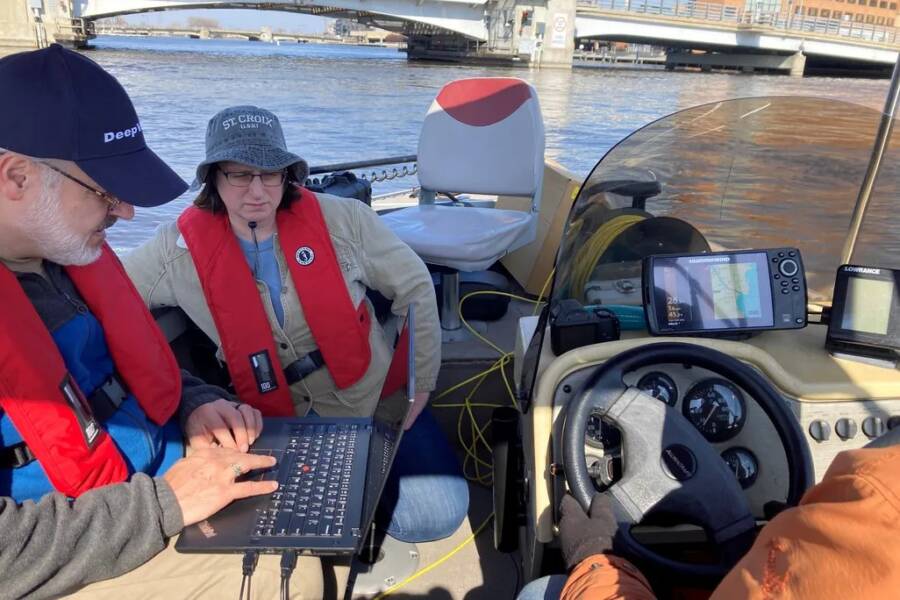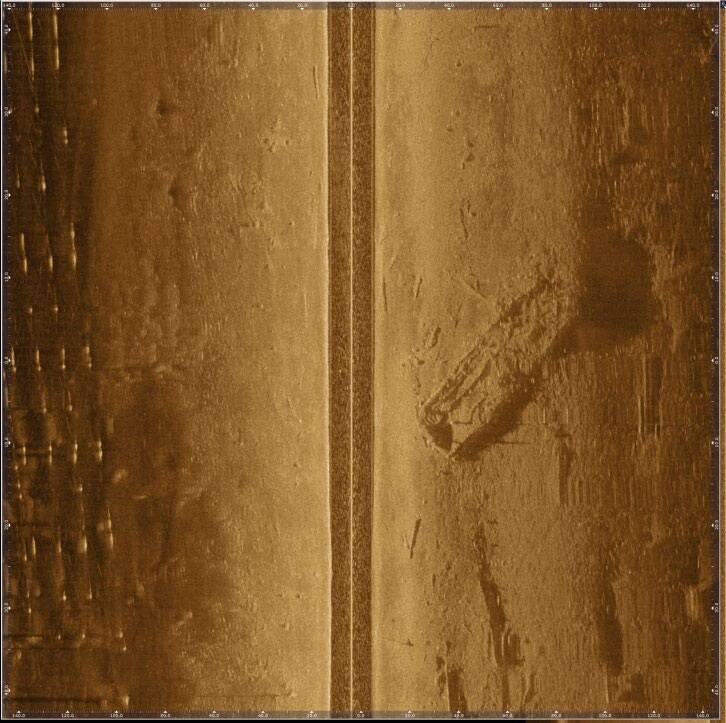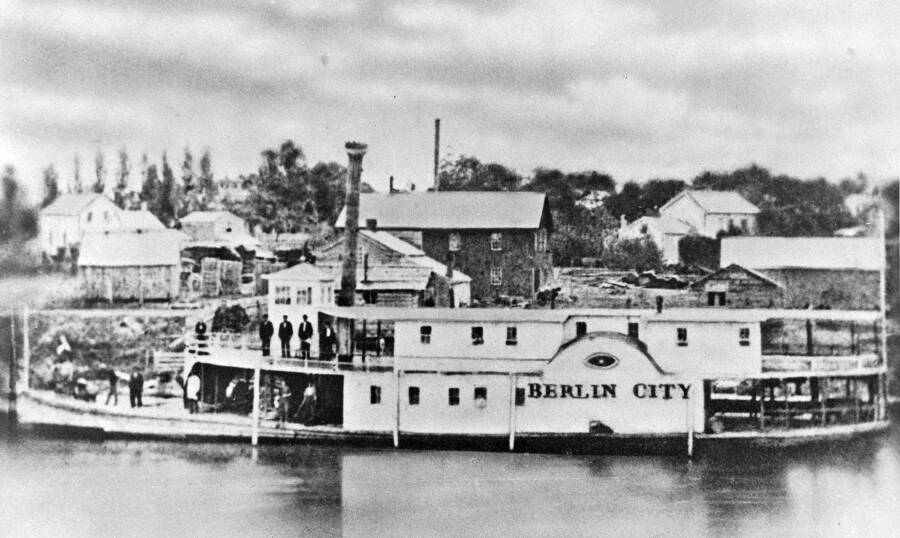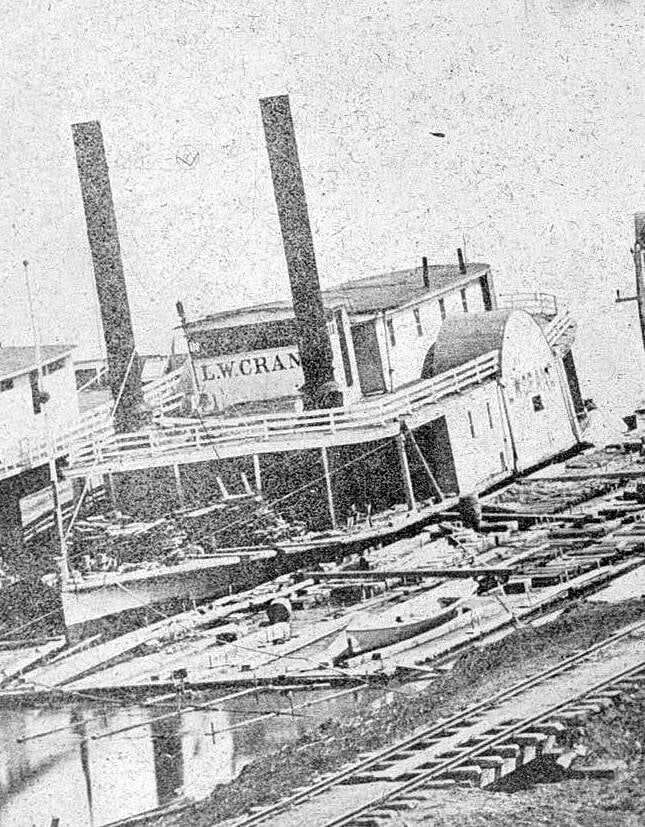Archaeologists in Oshkosh, Wisconsin were recently searching the Fox River for the remains of the Berlin City, a steamer that sank in 1870 — when they stumbled upon another historic shipwreck no one knew was there, a 90-foot wooden steamer believed to be the L.W. Crane.

Wisconsin Historical SocietyResearchers happened upon the presumed wreck of the L.W. Crane while surveying Wisconsin’s Fox River.
Researchers recently came across the wreck of what’s believed to be a 145-year-old steamship at the bottom of the Fox River in Wisconsin.
The ship is thought to be the L.W. Crane, which transported both passengers and freight throughout the Midwest via the Mississippi, Illinois, and Wisconsin Rivers starting in 1865. However, it caught fire and sank to the bottom of the Fox River in 1880.
Researchers with the Wisconsin Historical Society and the Wisconsin Underwater Archaeology Association made the discovery while surveying the river to look for a different shipwreck, which still has not been found.
The Unexpected Shipwreck Discovery At The Bottom Of Wisconsin’s Fox River

Wisconsin Underwater Archaeology AssociationSonar image of the presumed L.W. Crane wreck at the bottom of the Fox River in Oshkosh, Wisconsin.
In April 2025, researchers set out to find the shipwreck of the Berlin City, a wooden steamer that sank in the Fox River near Oshkosh, Wisconsin in 1870. They were also hoping to find the wreckage of a second ship that had first been identified in 2016.
The researchers eventually did find an historic shipwreck, though not the one they’d expected.
Using high-resolution side-scan sonar, the team was surveying a two-and-a-half-mile stretch of the river when they stumbled upon a sunken vessel, according to a statement from the Wisconsin Underwater Archaeology Association.
The boat was 23 feet wide and 90 feet long, dimensions that didn’t match those of the Berlin City, but did line up with the size of a different steamship, the L.W. Crane. The ship had a boxy shape and a flat bottom, allowing it to dock in shallow harbors.

Wisconsin Historical SocietyThe Berlin City, which sank in 1870.
“Sometimes you find the shipwreck you weren’t looking for,” said Jordan Ciesielczyk, a maritime archaeologist with the Wisconsin Historical Society. “(These are) the kind of discoveries that we live for.”
The L.W. Crane was used to transport passengers and freight throughout the region, traveling on several major rivers, like the Mississippi River, Illinois River, and Wisconsin River.
“It was used, like many [vessels] of that era, to move cargo, bulk commodities, up and down the river to the port towns so that the hardware stores and the mercantile stores can be well-stocked—kind of like the Amazon warehouses of today,” said Kevin Cullen, executive director of the Wisconsin Maritime Museum.
The Story Of The L.W. Crane And Its Fiery Demise In 1880

Murphy Library Special CollectionsThe L.W. Crane was built in the nearby town of Berlin, Wisconsin in 1865.
It’s unclear how exactly the L.W. Crane ended up at the bottom of the Fox River. According to the Wisconsin Shipwrecks database, the ship caught fire in 1880, leading to its sinking.
However, researchers still don’t know how the fire started. The location in which researchers found the vessel also directly contradicts reports from the time of the sinking about where the L.W. Crane met its end.
Both the L.W. Crane and the Berlin City were constructed in the nearby town of Berlin, Wisconsin. In the late 1800s, ship building was a profitable business in the cities and towns surrounding the Fox River.
“The rivers and lakes were the state’s highways, so they did a lot of shipping by the boats,” said Berlin historian Bobbie Erdmann. “Everything came together to make it a big money maker and a big asset at that time.”
The research team was able to successfully map their findings of the two-and-a-half-mile stretch of the river. Along with the unexpected find of the L.W. Crane, the team discovered the debris of what they suspect to be the Menasha as well as the other wreckage originally identified in 2016.
Local historians are beginning to look more closely into the history of the L.W. Crane, as well as the region’s maritime history at large.
“These (vessels) are kind of a forgotten piece of Wisconsin history,” Ciesielczyk explained. “Most people look at the Wolf and Fox Rivers, and it’s kind of hard to imagine that there was a 100-foot steam ship going up and down it regularly.”
After reading about how researchers stumbled upon the remains of a presumed 145-year-old shipwreck, discover how a father and daughter came across a 152-year-old shipwreck in Wisconsin. Then, learn about how researchers found the SS Western Reserve at the bottom of Lake Superior.





